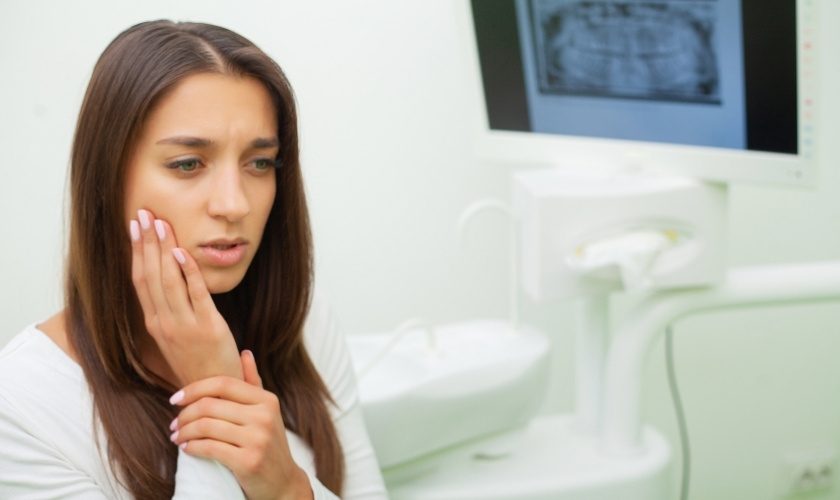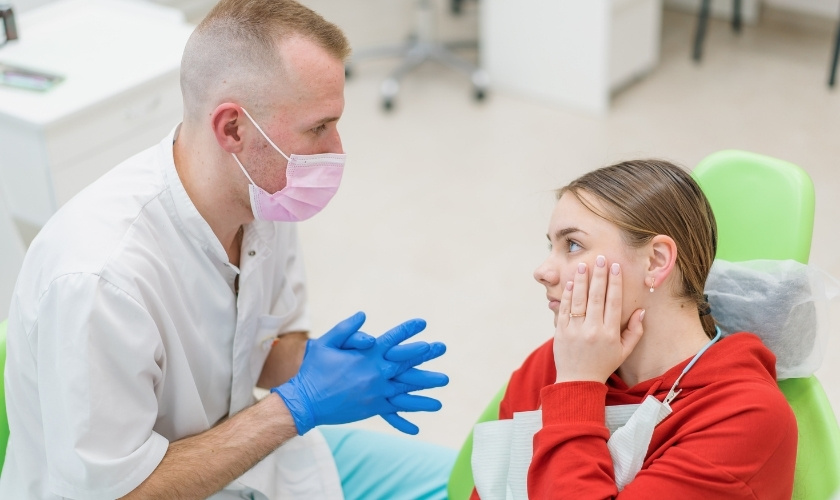
Dental emergencies can strike when you least expect them, and knowing how to handle them can make a significant difference. Prompt action is crucial, whether it’s a sudden toothache, a knocked-out tooth, or an injury to your gums. Dental emergencies often cause intense pain, swelling, and anxiety, so staying calm is key.
The goal of this guide is to equip you with essential first-aid knowledge, ensuring that you can manage a dental emergency effectively until professional help arrives. Understanding what constitutes a dental emergency can help you respond quickly and seek help from an emergency dentist when necessary.
Understanding Dental Emergencies
A dental emergency is any situation involving sudden discomfort, pain, or injury to the teeth, gums, or mouth that requires immediate attention. These emergencies range from mild toothache to more severe incidents like broken teeth or lost fillings. Common dental emergencies include:
- Toothaches: Persistent pain due to tooth decay or infection.
- Knocked-out Teeth: A tooth that falls from the socket, usually caused by trauma.
- Chipped or Broken Teeth: Damage to the teeth caused by accidents or hard foods.
- Soft Tissue Injuries: Cuts, tears, or punctures to the gums, lips, or tongue.
- Lost Fillings or Crowns: When dental work falls out, leaving the tooth vulnerable.
- Abscesses or Infections: Swelling or pus around the tooth, often from an untreated cavity or infection.
Each emergency demands timely first aid to relieve pain and prevent further damage. Knowing what to do in these situations can help prevent complications until you can visit an emergency dentist for further care.
General First Aid Tips for Dental Emergencies
During any dental emergency, staying calm and assessing the situation carefully is vital. Here are some general first-aid tips for handling dental emergencies:
- Stay Calm: Panicking can make the situation worse. Breathe deeply and try to remain composed.
- Control Bleeding: For cuts or injuries, apply pressure with a clean cloth or gauze to stop bleeding.
- Pain Management: Over-the-counter pain relievers such as ibuprofen can help manage discomfort. Avoid aspirin, as it can cause excessive bleeding.
- Cold Compress: Applying a cold compress to the affected area can reduce swelling and pain.
- Seek Help from an Emergency Dentist: If the injury involves a knocked-out tooth, significant pain, or other serious symptoms, visit an emergency dentist immediately.
- Do’s and Don’ts: Don’t try to re-implant a knocked-out tooth on your own or attempt to treat deep infections without professional guidance.
Knowing these basic tips can make a huge difference in effectively managing dental emergencies until you reach an emergency dentist.
Step-by-Step First Aid for Common Dental Emergencies
A. Toothache Relief
- Rinse Mouth: Use warm water to rinse your mouth, which helps clean it.
- Floss: Gently floss to remove any trapped food particles.
- Pain Relief: Take over-the-counter pain relievers like ibuprofen.
- Cold Compress: Apply a cold compress to the outside of the mouth to reduce swelling.
B. Knocked-Out Tooth (Avulsed Tooth)
- Find the Tooth: Handle the tooth by the crown (not the root).
- Rinse Gently: If dirty, rinse it with clean water (don’t scrub).
- Reinsert or Store: Try reinserting the tooth into the socket. If not possible, store it in milk or saline.
- Visit an Emergency Dentist: Get to an emergency dentist as quickly as possible to increase the chances of re-implantation.
C. Chipped or Broken Tooth
- Clean the Area: Rinse the mouth with warm water.
- Cold Compress: Apply a cold compress to reduce swelling.
- Save Pieces: If the tooth has broken into pieces, save them.
- Emergency Dentist Visit: Contact an emergency dentist for restorative treatment.
D. Soft Tissue Injuries (Gums, Lips, Tongue)
- Clean the Wound: Gently clean the wound with water.
- Apply Pressure: Use a clean cloth to apply pressure and stop bleeding.
- Cold Compress: Apply a cold compress to reduce swelling.
- Seek Immediate Help: If the bleeding doesn’t stop, visit an emergency dentist or healthcare provider.
E. Lost Fillings or Crowns
- Clean the Area: Remove debris from the exposed tooth.
- Temporary Solution: Use dental cement or sugar-free gum to temporarily cover the area.
- Emergency Dentist: Visit an emergency dentist for a permanent fix.
F. Dental Abscess (Infection)
- Salt Water Rinse: Rinse your mouth with warm salt water to reduce swelling.
- Avoid Heat: Do not apply heat directly to the affected area.
- Pain Relievers: Take over-the-counter pain relievers.
- Urgent Care: Seek urgent dental care to drain the abscess and prevent further complications.
When to Seek Professional Help?
Certain signs indicate that immediate care from an emergency dentist is necessary. These include:
- Uncontrollable Bleeding: If bleeding persists despite applying pressure, it’s time to seek professional help.
- Severe Pain: If pain continues despite taking pain relievers, you may have a deeper issue.
- Swelling or Infection: If you notice swelling or pus around a tooth, it could be an abscess that needs urgent treatment.
- Missing or Broken Teeth: These often require restoration to prevent further damage.
Visiting an emergency dentist as soon as possible can help prevent complications and restore your dental health.
Preventive Tips to Minimize Dental Emergencies
Preventing dental emergencies is always better than dealing with one. Here are some tips to minimize the risks:
- Mouthguards: Wear a mouthguard during sports to protect your teeth from injury.
- Good Oral Hygiene: Brush and floss regularly to prevent tooth decay and gum disease.
- Regular Checkups: Visit your dentist regularly for checkups and cleanings to catch potential problems early.
- Avoid Hard or Sticky Foods: Ice or caramel can damage teeth and dental work.
- Teach Kids Dental Safety: Ensure children understand the importance of dental care and safety during activities.
These preventive steps can significantly reduce the likelihood of experiencing a dental emergency.
Preparing for dental emergencies can make all the difference in minimizing damage and relieving pain. Keep a first-aid kit with essentials like gauze, pain relievers, and dental cement.
Remember, no matter how well you manage the situation, it’s essential to seek care from an emergency dentist to ensure proper treatment and recovery. Acting quickly can protect your smile and prevent long-term dental issues.




